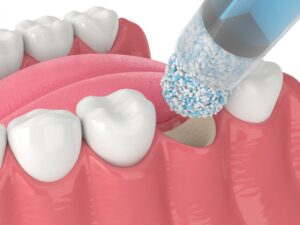Dental implants are a popular solution for patients who are missing teeth or have issues with their oral health. However, not everyone is a good candidate for dental implants. One of the main reasons why patients may not be eligible for dental implants is that they do not have enough bone density in their jaws to support the implant. This is where bone grafting comes in. Bone grafting is a surgical procedure that helps increase the amount of bone tissue in the jaw, making it strong enough to support a dental implant. In this blog post, we will discuss everything that you need to know about bone grafting in Parker.

What is bone grafting?
Bone grafting is a surgical procedure that involves taking bone tissue from one part of the body and transplanting it into another area that lacks bone tissue. This can be done using various techniques, including autografts (using bone tissue from your own body), allografts (using bone tissue from a donor), and xenografts (using bone tissue from animals).
Why is bone grafting necessary for dental implants?
Dental implants require a secure foundation to be successful. Without enough bone density, the implant will not have a strong enough base to support it, leading to implant failure. A bone graft Parker specialist will help restore the necessary amount of bone tissue, creating a strong foundation for the implant to be inserted.
The different types of bone grafts
As mentioned earlier, there are different types of bone grafts, each with its own set of advantages and disadvantages. Your dentist will recommend one based on your specific needs and condition. Autografts, for instance, are known to have high success rates since they use your own bone tissue. Allografts, on the other hand, do not require additional surgery to harvest the bone tissue, which can help reduce the risk of complications.
The bone grafting process
Before you undergo bone grafting in Parker, you will undergo a comprehensive dental exam to assess your oral health. This will help determine if you are a good candidate for the procedure and which type of graft is best for you. On the day of the procedure, your dentist will make a small incision in your gum tissue to expose the area where the graft will be placed. The graft material will then be inserted into the area and secured in place. Your dentist will give you specific instructions on how to take care of the surgical site to ensure proper healing.
Recovery and aftercare
After the surgery, you will be given pain medication and antibiotics to manage any discomfort and prevent infection. You will need to avoid certain foods and activities for a few weeks while your body heals. Your bone graft Parker dentist will schedule follow-up appointments to monitor your progress and ensure that the graft has integrated with your jawbone properly.
Bone grafting is a safe and effective way to increase bone density in the jaw, making it possible for patients to get dental implants. If you are missing one or more teeth, or have issues with your dental health, it’s important to discuss your options with your dentist. They will conduct a thorough assessment and recommend the best course of treatment for you. With proper care, bone grafting can significantly increase your chances of having a successful dental implant that lasts for many years.
